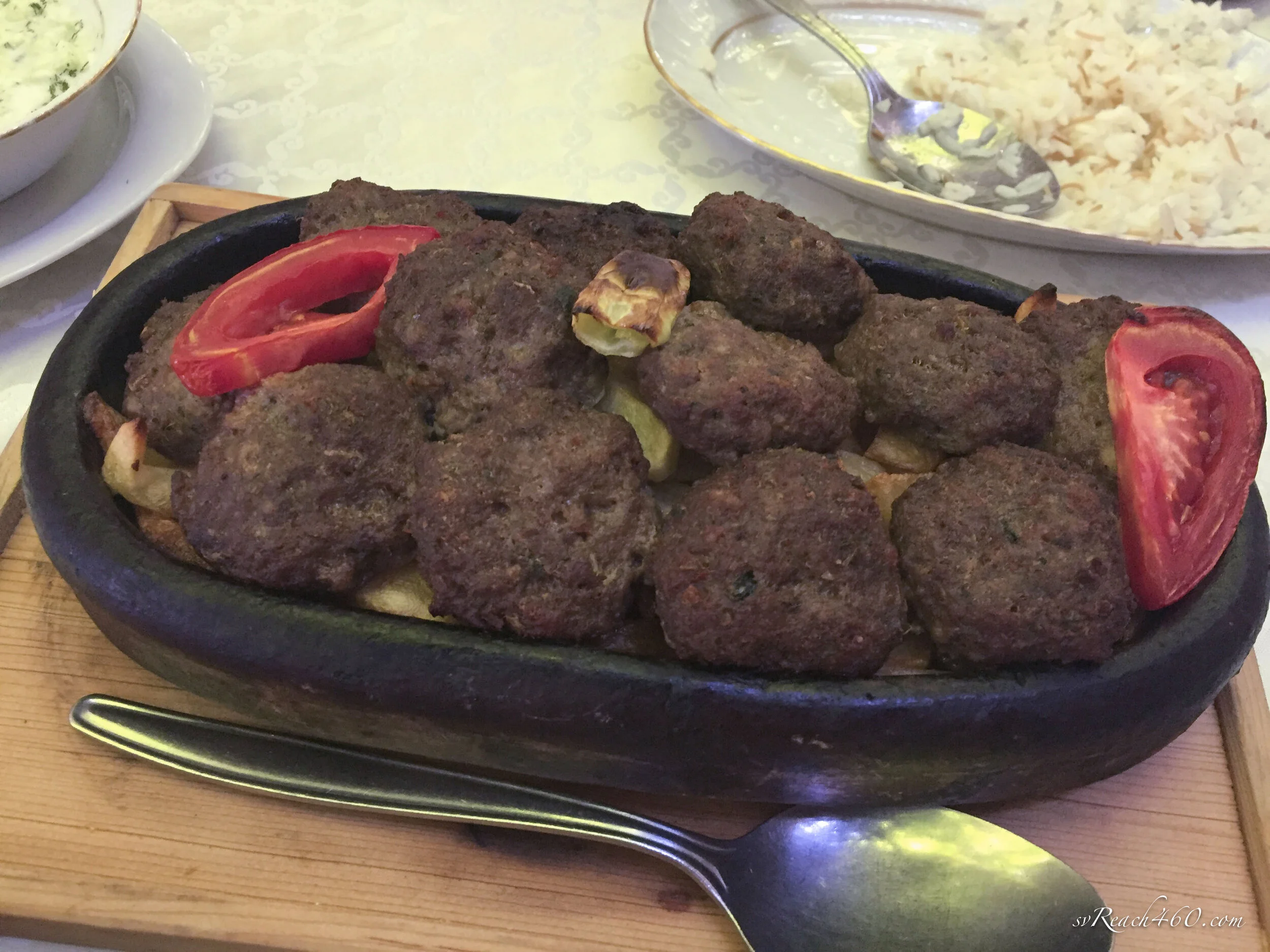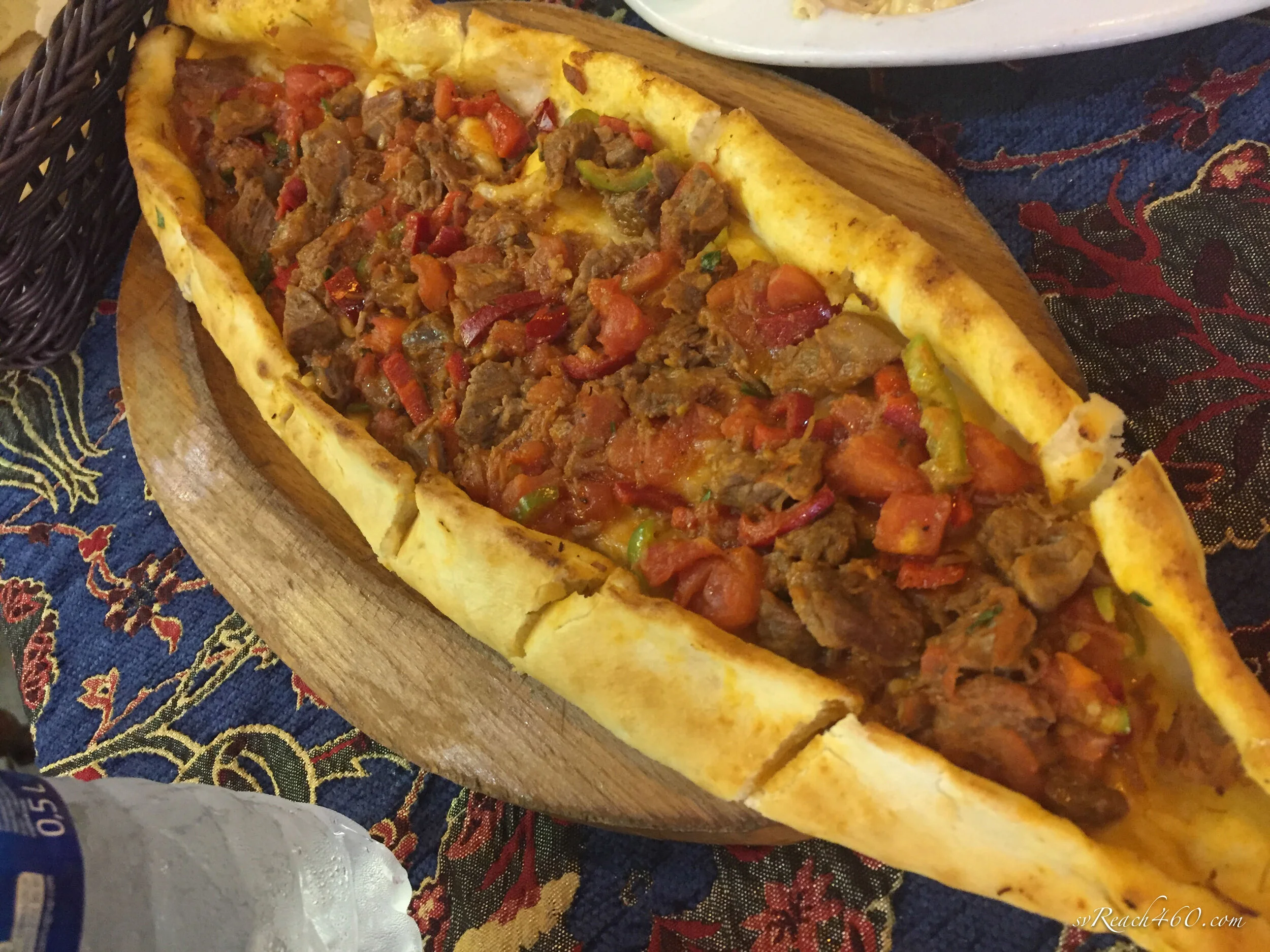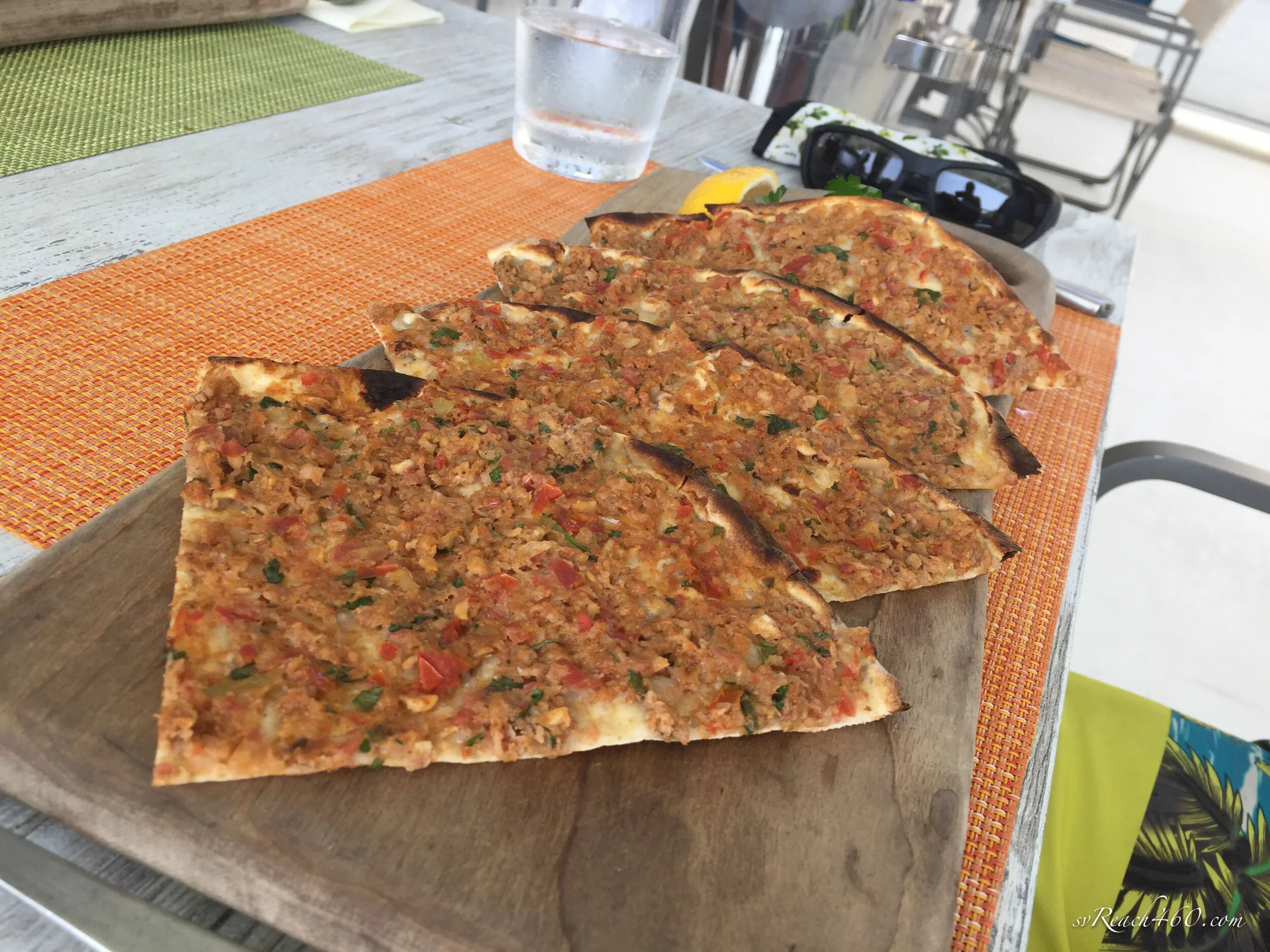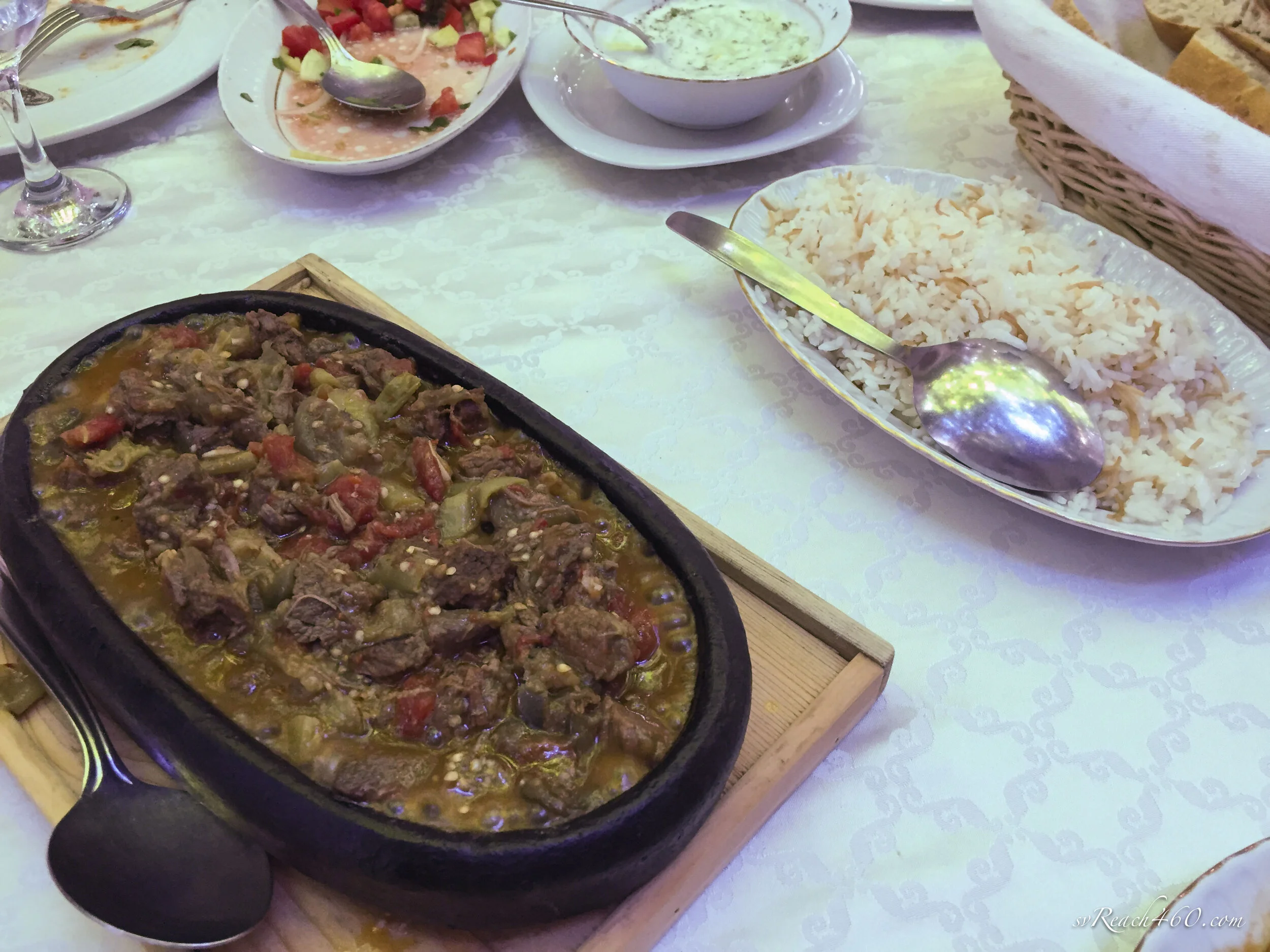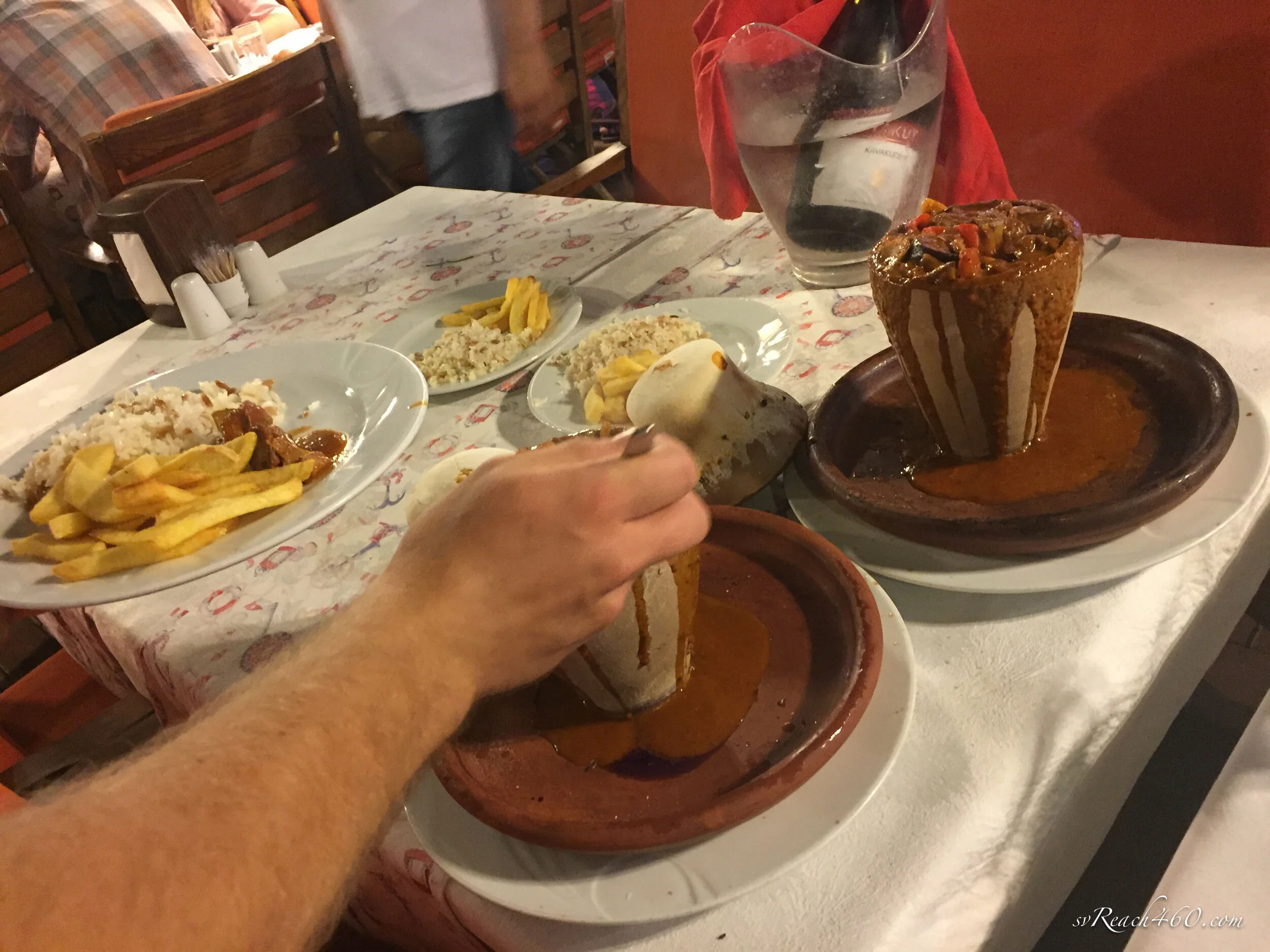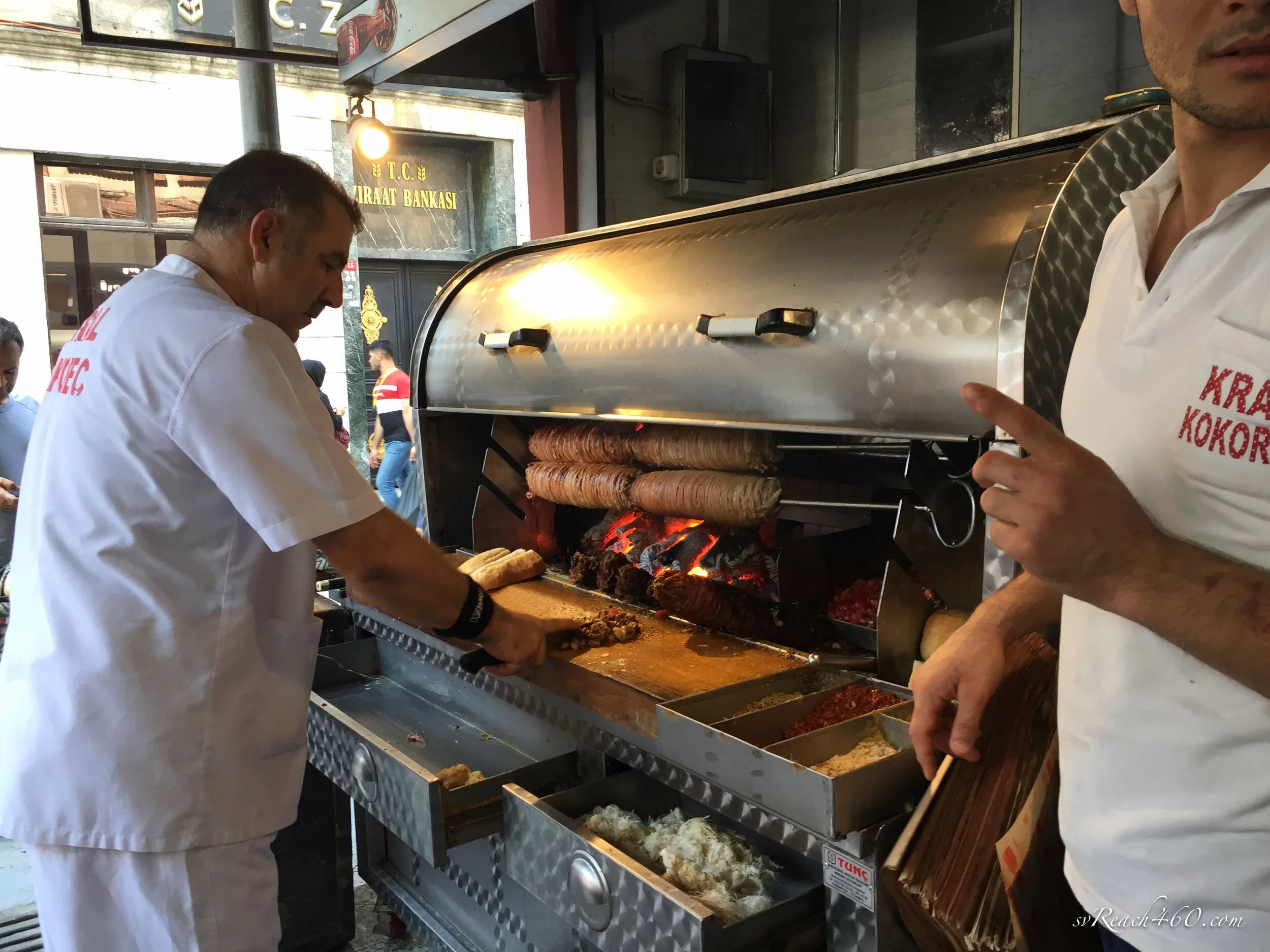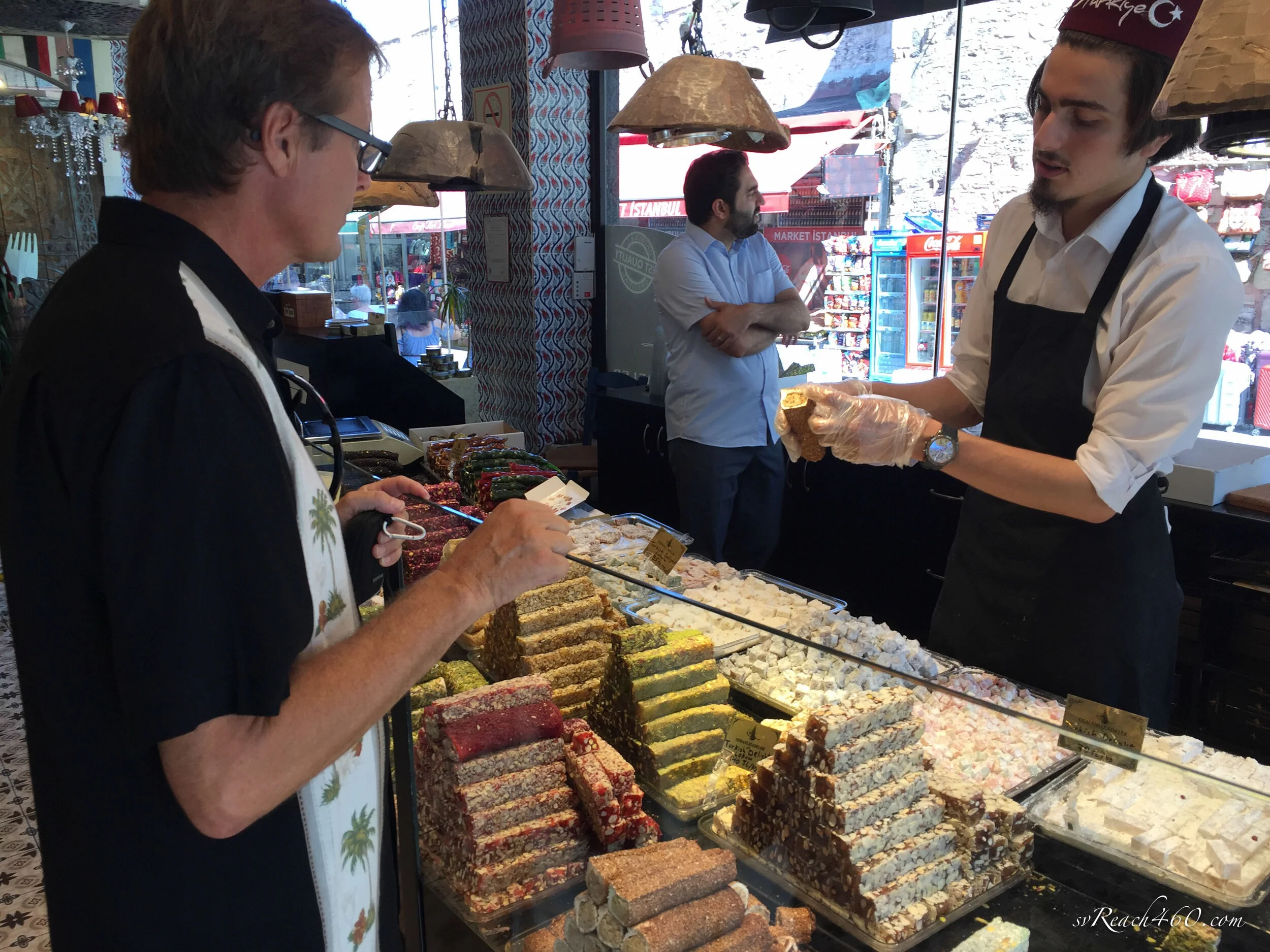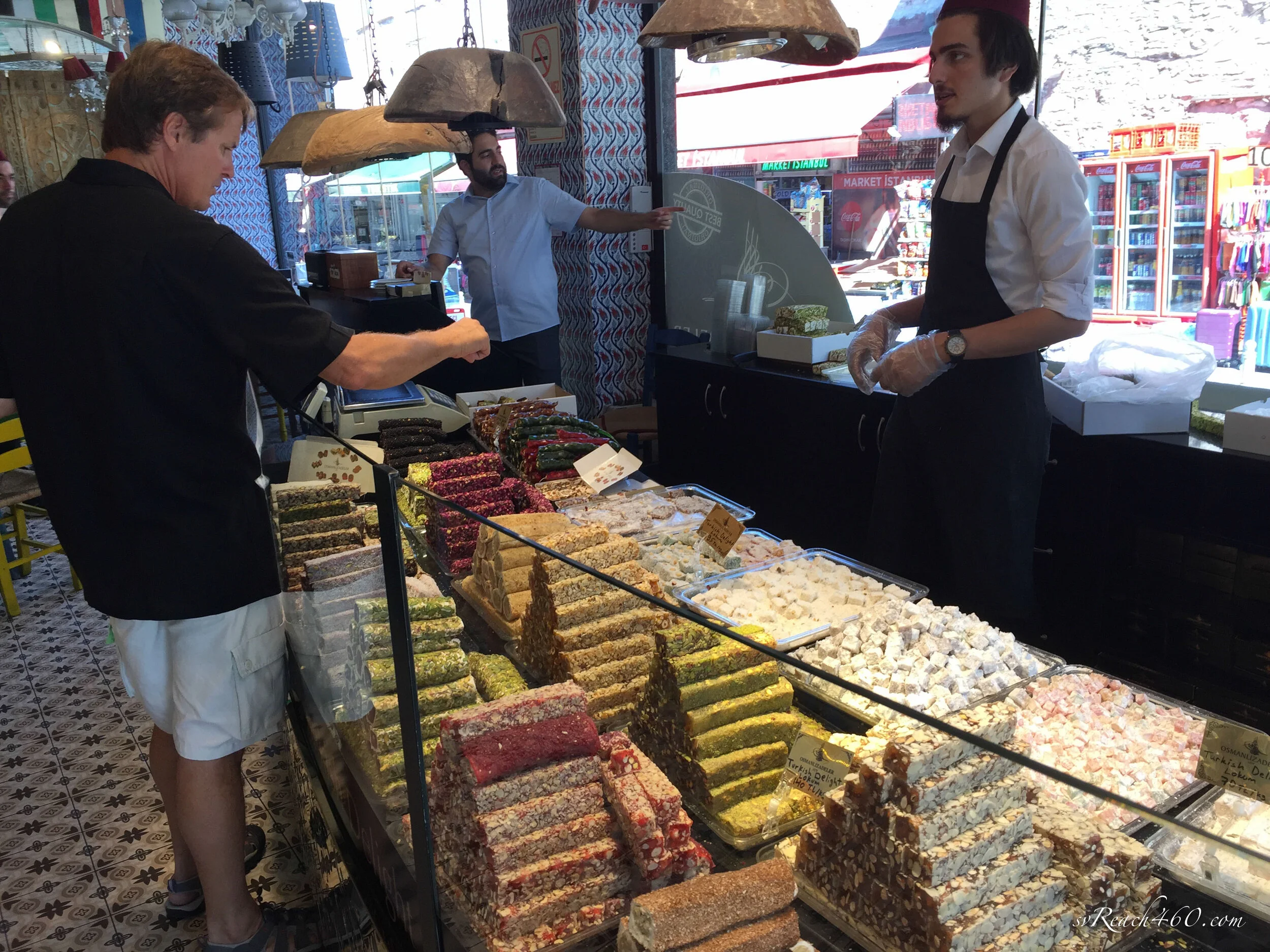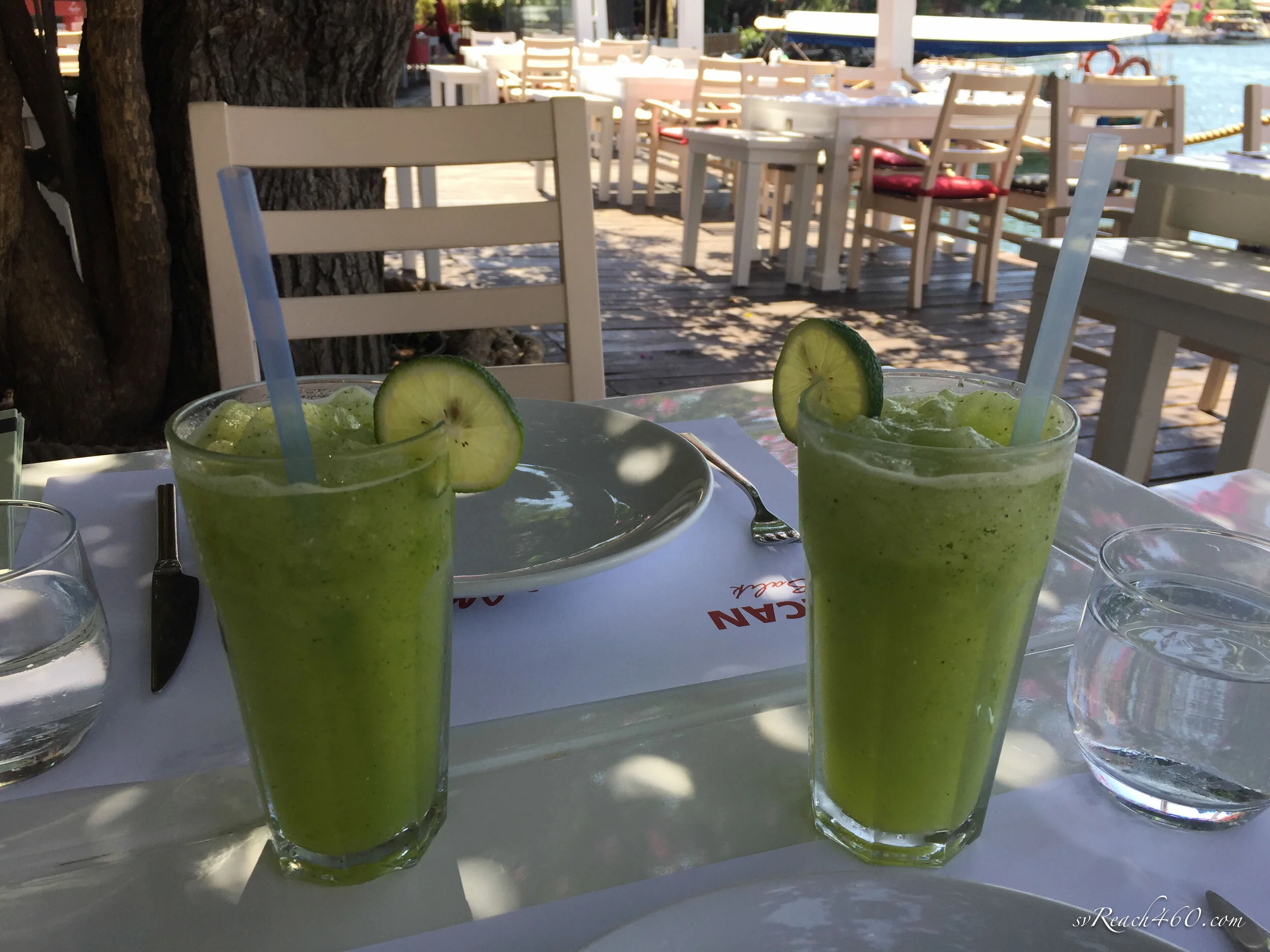Turkey - Food
Turkish cuisine completely won us over.
The incredible food was one of the best surprises about our trip to Turkey. We love eating new things and found here an entirely new array of flavors and textures to try.
Several keys to Turkish cooking appear to be the perfect spice complements with all food and fresh locally grown ingredients...
…not to mention fresh baked breads & simit (Turkish bagel) served everywhere and with every meal.
A Turkish breakfast is a mix of breads, honey and jam, vegetables, olives and cheeses, often accompanied by an egg. I was in heaven.
A highlight of all meals is the MEZE. A huge variety of fresh appetizers were always on display to choose from. These were often light salads with yogurt, cucumber, tomato, eggplant or cheese bases, perfectly spiced of course. They are all so delicious that it was hard not to overeat before your meal!
Meats dominated menus, particularly lamb, along with some chicken and beef. A predominately Muslim country, you won’t find pork on the menus.
Seafood could be found along the coast, mostly fish, octopus, shrimp and occasionally crab.
We soon got to know the new vocabulary ~ menus were pretty consistent and all contained the standards ~ and could soon relate Turkish dishes to our Western equivalents:
Döner ~ Spit-cooked spiced meat sliced
Köfte ~ minced meatball (can be bulgur)
Gözleme ~ pancake (sweet or savory)
Kebap ~ grilled meat
Pide ~ Turkish pizza
Lamachun ~ Flatbread pizza
Kuzu tandir ~ roast lamb
Güveç ~ stew/casserole
Lizz served us yummy döner wraps on Kaya for lunch every day with sautéed onions and a Turkish arugula called “rocket”.
Döner meat is the equivalent of gyro (Greek) or shawarma (Middle Eastern).
We also ordered testi kebab one evening, a lamb stew grilled over charcoal in a clay earthen pot. It was presented over flames steaming through a dough lid.
I don’t often take video, but remembered it just at the right time.
The clay pot is then carefully cracked open to reveal the delicious stew.
In Istanbul, we went on a culinary walking tour to taste içli köfte (deep fried bulgur meatball), adana kebap (minced meat kebap) and pide (Turkish pizza), followed by baklava… right up our alley!
We also tried two new dishes on this tour: çig köfte (raw meat & bulgur patty) and kokoreç (grilled lamb intestines). They were all delicious!!
This street version of çig köfte excluded the raw meat and was just bulgur (filling piled in the box on the left). The spices were amazing and you could get the hot version (yes, please!).
They roll it in lettuce or dürüm (wrap) and pour a half lemon over it for serving. This guy had a long line and was apparently very popular on Instagram ~ his amusing personality made everything taste even better.
The kokoreç was so crispy and greasy and good, remeniscincent of great hangover food (confirmed by our guide!). Lamb intestine is wrapped and grilled on long skewers and then chopped fine and placed on bread.
Interestingly, it is served with stuffed mussels. These were on the tables like condiments, where the shells had been opened, filled with rice and a steamed mussel, and then shut back up and served with lemon. This establishment was full of locals enjoying this guilty pleasure.
On the streets there were delights to be found everywhere: spices, nuts, olives, dried fruit, pastries and, of course, Turkish delight (gelatin or nougat) sweets. Most establishments offer çayi tea, often infused with apple or pomegranate. Homemade limonada (with mint) and Turkish coffee were also not to be missed.
No description of Turkish cuisine is complete without mention of the local liquor, Raki. It is an anise drink of clear alcohol that turns milky when mixed with ice and water.
You might like Raki if you like licorice, as I do.
The Greek equivalent Ouzo is often also mixed with water and the Italian version chilled with a coffee bean garnish… şerefe!







